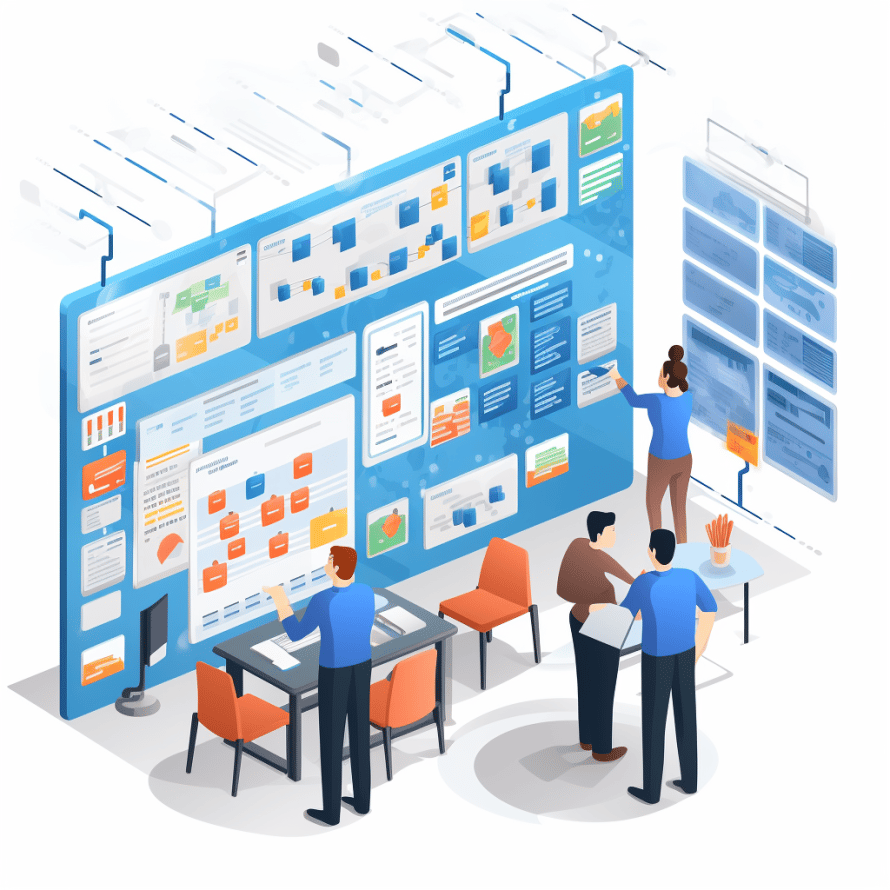
At the core of innovation lies Classic IT Product Management, a driving force behind the evolution of digital solutions. Picture the Classic IT Product Manager navigating the entire product lifecycle, seamlessly translating intricate technical details into user-friendly experiences. The ultimate goal? Meeting market demands with cutting-edge solutions.
The primary challenge faced by Classic IT Product Managers is the relentless pace of technological evolution. Staying ahead of trends, adapting products, and aligning with the ever-changing tech landscape demand constant vigilance and adaptability. The fast-paced nature of the tech world requires a keen eye on emerging technologies, ensuring that products not only meet current needs but are also future-proof.
As we delve deeper into the technical realm of Classic IT Product Management, it's crucial to recognize the multifaceted challenges that come with steering products through their lifecycle.
Adapting products to stay relevant in a rapidly evolving tech landscape is a perpetual challenge. Technological obsolescence is a constant threat, and Classic IT Product Managers must continuously evaluate and incorporate emerging technologies to maintain product competitiveness.
Classic IT Product Managers operate in a dynamic market environment. Navigating market trends, competition, and the ever-shifting sands of user demands require agility and a proactive approach. Understanding user needs and market dynamics becomes a strategic imperative to ensure sustained product success.
Managing the need for quick releases while addressing the accumulated technical debt is a constant tightrope walk. The pressure to deliver features promptly must be balanced against the long-term consequences of technical debt, requiring astute decision-making and strategic planning.

Shifting our focus to Partner Product Management, we move beyond individual products to embrace the entire partner journey within a dynamic ecosystem. The Partner Product Manager becomes the maestro, orchestrating touchpoints and collaborating extensively to craft seamless experiences for partners.

As we continue our journey through the tech universe, it's crucial to strike the right balance between technical prowess and strategic agility. Both Classic IT Product Managers and Partner Product Managers need to leverage technical insights to drive innovation, meet evolving demands, and create seamless digital experiences.
The landscape of technology is vast, encompassing emerging trends such as artificial intelligence, machine learning, and blockchain. Classic IT Product Managers must navigate these technological frontiers to ensure their products remain at the forefront of innovation. Partner Product Managers, on the other hand, must leverage these technologies strategically to enhance the overall partner journey and ecosystem.
Looking forward, the role of technology in Product Management will continue to evolve. Classic IT Product Managers will need to embrace a mindset of continuous learning to stay abreast of emerging technologies and industry trends. This not only involves technical acumen but also an understanding of how these technologies can be strategically applied to meet market demands.
For Partner Product Managers, the road ahead involves a deeper integration of technology into the partner journey. The seamless orchestration of touchpoints will increasingly rely on advanced analytics, artificial intelligence, and data-driven decision-making. This technological integration is not just about staying competitive; it's about delivering a partner experience that goes beyond expectations.
As we navigate the tech universe, I'm eager to hear your technical insights. What challenges have you encountered in either Classic IT Product Management or Partner Product Management? How have you leveraged technology to drive innovation and meet evolving demands in your tech journey?
Feel free to dive deep into the technical intricacies. Your insights are invaluable, shedding light on the practical aspects that shape innovation in the tech industry.
Find out if MentorCruise is a good fit for you – fast, free, and no pressure.
Tell us about your goals
See how mentorship compares to other options
Preview your first month
